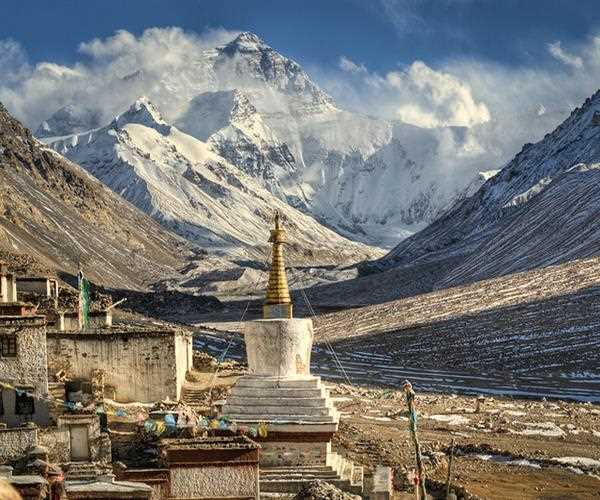Search here

01-Jun-2024 , Updated on 6/2/2024 11:02:21 PM
Is Tibet part of India? Yes
The discussion about Tibet and its political status is a complicated one and has a rich history. To know more about the controversy as to why some people say Tibet is a part of India, one has to consider history, culture and politics. This relationship between Tibet and India has been long-standing and therefore one cannot talk of Tibet without mentioning the Indian influence.
Although, currently Tibet is considered as the Chinese province, its spiritual and cultural identity is believed to be in resonance with India. This perception is determined by the historical movements, religious believes, and the fact that India has been a major host and supporter to the Tibetans starting from middle of the last century.
Historical Context
Tibet, a region in the Himalayas, is a home to number of incredible culture and traditions as well as Buddhism. China invaded Tibet in 1950 stating that it was to liberate the area from the Tibetans whom communists accused of stagnating economic growth there. This invasion proved to be destructive for the future of the Tibetan people.
Many people were deported to the Gulag, hundreds of monasteries and churches were closed and destroyed, monastics were shot or imprisoned, often for the mere accusation of sorcery or collaboration with the enemy. In 1959, Tibet’s spiritual leader the Dalai Lama escaped to India and he was given an asylum; he formed a Tibetan Government-in-exile. Currently, there are about 1,30,000 refugees in India mostly in Dharamshala which is his capital in exile.
Cultural and Religious Connections
These two countries are bound by a lot of religious similarities with each other. Tibetan Buddhism is the most popular religion in Tibet It originated in India. Concerning their relationship with the country, many Tibetans consider India as a sacred country since Buddhism begun from India. Tibet’s exiled religious leader his holiness the Dalai Lama still resides in exile in India and leads the Tibetans there. This spiritual relationship strengthens the relationship between the two regions.
Migration and Refugee Issues
The migration of the refugees into India has brought about the following problems. A large number cross over to India via Nepal and most of them trek through the Himalayas a very dangerous journey. They do this due to push factors such as scaled-down education prospects and economical subjugation from Tibet.
In India for instance, the government-in-exile finds it hard to give refuge to these people mainly because of inadequacy of resources. However, the Indian government has not only offered asylum to the Tibetans but also helped in building a strong identity to the Tibetan refugees community.
The Seventeen-Point Agreement
Later in 1951 due to force, Tibet was compelled to sign the Seventeen Point Agreement with China where they gave mandatory-Chinese control over Tibet. But the Julio Agreement was not received well by many Tibetans resulting to rebellions. From the year 1957 and up to 1973, the Tibetans together with little known assistance from the Americans, fought against Chinese intrusion.
Although this armed struggle is more or less suppressed and is not very well known today, it played a significant role for the escape of the Dalai Lama to India in 1959.
Tibetan Education in Independent India
India has served a major role in offering education to the Tibetan refugees. After gaining its independence, the Indian government provided boarding schools during the major hill stations that incorporated thousands of kids with modern-day education from the Tibetan society.
These schools also hired teachers from Buddhism to ensure that the Tibetan culture and religion were kept intact. Tibetan people need to be given support and India has been tremendously helpful to sustain the cultural preservation of the exiled Tibetans.
Economic Factors
One of the reasons that make Tibetans move to India is because of economic enabler pull factors. Through a process of analyzing the population census, literature and data available on the Internet, it may be concluded that in the economic development of Tibet the benefits primarily go to Chinese settlers, which leads to the economic isolation of the Tibetans.
On the other hand although India is not as resourceful country as China it provides better economical opportunities for the Tibetan refuges. This raises an important question on the economic status of Tibetans and their quality of life under Chinese rule.
Political Dynamics
It is also importantly noted that there are political relations between India and China that affect the issue of Tibet. India supports the Tibetan government-in-exile which is an issue that has exacerbated the India China relations.
However, the tensions given earlier, India goes on to offer asylum as well as support to the Tibetans. The very presence of the Dalai Lama in India exemplifies this support and further bolsters the case for the integration of Tibet into India.
Conclusion
Despite the fact that Tibet is not India’s subordinate nation, it shares strong ties with the region due to historical, cultural, as well as political links. The India support to the Tibetan refugees, the common religious background of both and large role that India plays to protect the integration and the identity of the Tibetans also show a reality of close connection.
One may therefore conclude that the reasoning for considering Tibet as a part of India is based on these historical links and the continued Indian support of the Tibetan struggle.

Student
An MBA in finance imparts and improves management aptitude, inventive ability, critical thinking ability, and so forth. It offers a real-time experience that fabricates a staunch career foundation for students and working professionals. It helps them to thoroughly understand the financial sector.
Join Our Newsletter
Subscribe to our newsletter to receive emails about new views posts, releases and updates.
Copyright 2010 - 2025 MindStick Software Pvt. Ltd. All Rights Reserved Privacy Policy | Terms & Conditions | Cookie Policy